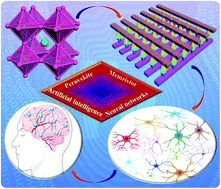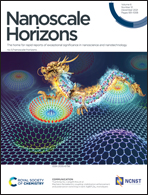ABO3 multiferroic perovskite materials for memristive memory and neuromorphic computing
Abstract
The unique electron spin, transfer, polarization and magnetoelectric coupling characteristics of ABO3 multiferroic perovskite materials make them promising candidates for application in multifunctional nanoelectronic devices. Reversible ferroelectric polarization, controllable defect concentration and domain wall movement originated from the ABO3 multiferroic perovskite materials promotes its memristive effect, which further highlights data storage, information processing and neuromorphic computing in diverse artificial intelligence applications. In particular, ion doping, electrode selection, and interface modulation have been demonstrated in ABO3-based memristive devices for ultrahigh data storage, ultrafast information processing, and efficient neuromorphic computing. These approaches presented today including controlling the dopant in the active layer, altering the oxygen vacancy distribution, modulating the diffusion depth of ions, and constructing the interface-dependent band structure were believed to be efficient methods for obtaining unique resistive switching (RS) behavior for various applications. In this review, internal physical dynamics, preparation technologies, and modulation methods are systemically examined as well as the progress, challenges, and possible solutions are proposed for next generation emerging ABO3-based memristive application in artificial intelligence.

- This article is part of the themed collection: Nanoscale Horizons 10th anniversary regional spotlight collection: China


 Please wait while we load your content...
Please wait while we load your content...